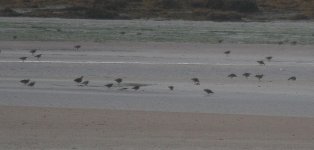Arbu
Well-known member
Big flock of waders (100 say) on mudflats at Cloghane, County Kerry, Ireland on 25th August 2008. They were rather distant, but the bills looked about right for Whimbrel. Surprised to see such a big flock though it that's what they were. Any thoughts? Attached photo is pretty poor.
Edit, sorry wrong forum. Grateful if someone can move it to the Bird Identification Q&A Forum.
Edit, sorry wrong forum. Grateful if someone can move it to the Bird Identification Q&A Forum.
Attachments
Last edited:







